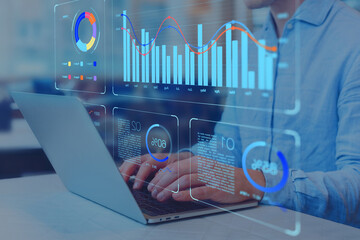Data Analysis vs. Data Analytics
Introduction
In the modern era of information and technology, the terms “Data Analysis” and “Data Analytics” often surface in various contexts, ranging from academic research to corporate strategy. Although these terms are frequently used interchangeably, they embody distinct methodologies and serve different purposes. Understanding the nuances between data analysis and data analytics is vital for leveraging data-driven insights effectively.
Data Analysis: The Foundation
Data Analysis is the process of inspecting, cleaning, transforming, and modeling data with the objective of discovering useful information, drawing conclusions, and supporting decision-making. It generally involves four stages:
1. Data Collection: Gathering relevant data from various sources.
2. Data Cleaning: Removing inaccuracies and inconsistencies to ensure data quality.
3. Data Transformation: Converting data into a suitable format for analysis.
4. Data Interpretation: Using statistical and logical techniques to evaluate data and make informed conclusions.
Key Techniques in Data Analysis
- Descriptive Statistics: Summarizing basic features of data.
- Inferential Statistics: Making predictions or inferences about a population based on a sample.
- Exploratory Data Analysis (EDA): Discovering patterns, anomalies, and relationships through visualization.
Data Analytics: The Strategic Advantage
Data Analytics encompasses a broader scope, focusing not only on data examination but also on the application of algorithms and mechanical processes to derive predictive and prescriptive insights. It aims to generate actionable insights that can inform strategic decision-making and operational efficiency. The main types of data analytics include:
1. Descriptive Analytics: Analyzing historical data to understand what has happened.
2. Diagnostic Analytics: Determining why something happened by identifying patterns and correlations.
3. Predictive Analytics: Using statistical models and machine learning techniques to forecast future trends.
4. Prescriptive Analytics: Recommending actions based on predictive insights to achieve desired outcomes.
Key Techniques in Data Analytics
- Machine Learning: Training algorithms to recognize patterns and make predictions.
- Artificial Intelligence (AI): Leveraging AI to automate data-driven decision processes.
- Big Data Analytics: Handling and analyzing vast volumes of data through specialized tools and techniques.
Differences and Overlaps
Scope and Objective
- Data Analysis is primarily concerned with understanding and interpreting past and present data. Its objective is to extract meaningful insights and provide explanations.
- Data Analytics extends beyond understanding data to include predicting future trends and prescribing actions. Its objective is to drive strategic and operational decisions.
Techniques and Tools
- Data Analysis relies on traditional statistical techniques and visualization tools.
- Data Analytics incorporates advanced algorithms, machine learning models, and AI-driven tools.
Outcome
- Data Analysis outcomes are primarily descriptive or diagnostic, providing explanations and understanding.
- Data Analytics outcomes are predictive and prescriptive, offering foresight and actionable recommendations.
Conclusion
Both data analysis and data analytics play crucial roles in the data-driven landscape. While data analysis lays the groundwork by providing essential insights and understanding, data analytics leverages these insights to predict future trends and prescribe actions. Mastering both disciplines is essential for harnessing the full potential of data and driving successful outcomes in any domain.
*Leveraged Microsoft Copilot Gen AI Tool*

